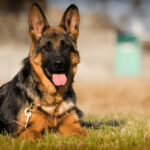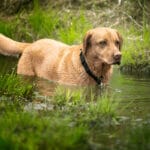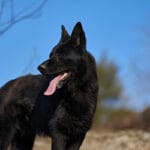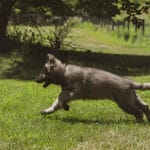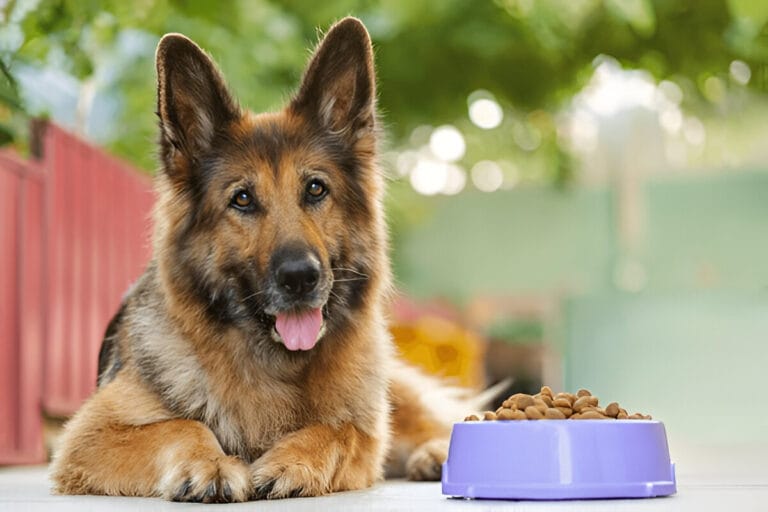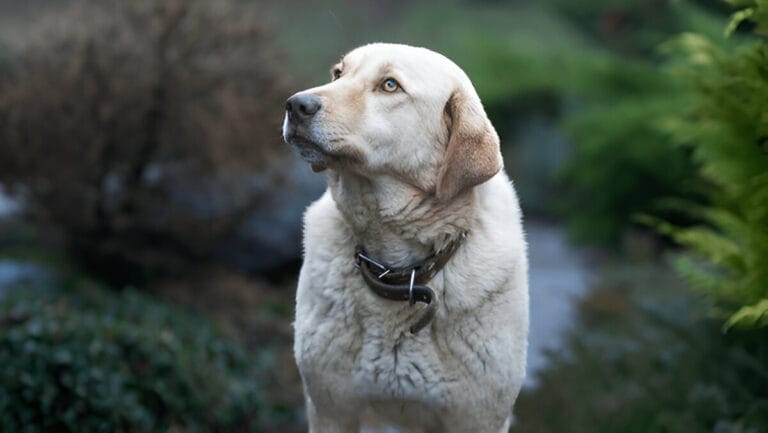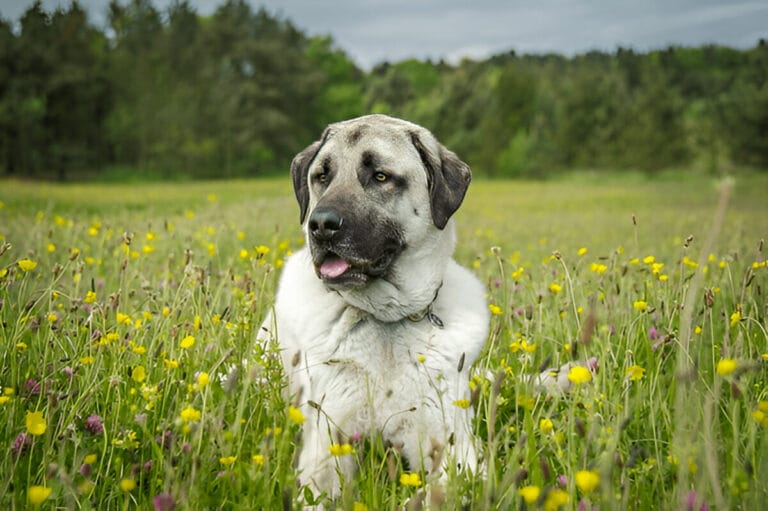Czech German Shepherd
Czech German Shepherds are commonly referred to as a distinct subset of the traditional breed that hail from the border regions between Czechia and Germany.
These remarkable dogs share many characteristics with their German counterparts, except they tend to have lighter color variations and heavier weight due to their more muscular build.
Having worked with various shepherd lines over the years, I’ve found these rare and prized canines to be exceptionally close to their handlers, making them outstanding protection and guard dogs while also serving as excellent family pets with proper and ongoing socialization from a young age.
What makes these highly energetic companions truly special is that they must be given plenty of physical exercise and mental stimulation to thrive. This uncommon dog breed can be challenging to determine as the right choice for many families, but for those seeking a devoted shepherd companion, they’re worth considering.
The medium-size herding dogs from the Czech Republic feature a distinctive medium-length wavy coat that gives them an overall appearance quite similar to standard German Shepherds, yet with a more well-proportioned and compact build.
Their erect ears, elongated neck, and ability to move with a fluid, graceful gait showcase their working heritage. These dogs are generally bright, alert, and incredibly loyal, quite devoted to their families, though making the process of acquiring one can be difficult since people often find limited availability through reputable breeders.

Photo credit: Shutterstock by Jess Whitney
Breed Overview
The Czech German Shepherd stands between 24 to 26 inches in Height and typically weighs 50 to 90 pounds, with a Lifespan of 12 to 14 years, displaying beautiful Colors including Black, gray, brown, and tan variations.
This breed is Suitable for Experienced owners who are looking for an active, alert, and loyal dog with a Temperament that’s distinctly Loyal, affectionate, smart, intelligent, athletic, and protective.
While the standard German Shepherd remains one of the best-known and most popular breeds in the world for working and companion roles, still being used for guard, police, and close protection work, this rare Czech subset is generally more intense, thanks to their selective breeding nature.
From my experience with various shepherd lines, they’re not recommended for first-time owners, and even experienced handlers must ensure they provide enough mental stimulation, physical exercise, training, and socialization to have a well-adjusted dog that behaves well around strangers.
Czech German Shepherd Characteristics
Energy
Czech German Shepherd dogs are distinctly High-energy companions that need a lot of both mental and physical stimulation to stay happy and healthy, which contrasts sharply with low-energy breeds that require only minimal activity for their well-being.
From my years of working with various shepherd lines, it’s absolutely important when choosing a dog to make sure their energy levels perfectly match your lifestyle, or vice versa, because these athletic canines will become destructive and anxious without adequate outlets for their intense drive and intelligence.
Trainability
Czech German Shepherd dogs are remarkably Easy-to-train companions that prove more skilled at learning new prompts and actions quickly compared to many other breeds, requiring only minimal training sessions to master complex commands.
While some individual dogs might be harder to train and require a bit more patience and consistent practice, the majority of Czech German Shepherds excel in obedience work due to their remarkable cognitive abilities and intense motivation to satisfy their owners.
Health
Czech German Shepherd dogs, like some other large breeds, can face challenges due to their size and potential genetic health issues that may result in shorter lifespans than others, but with proper exercise, quality nutrition, and excellent hygiene practices, owners can play an important role in maximizing their pet’s lifespan.
Lifespan
Czech German Shepherd dogs, like some other large dog breeds, are prone to certain genetic health problems more than others, but this doesn’t mean that every individual will have these issues, though there is an increased risk that makes it important to understand and prepare for the additional care needs these magnificent companions may require throughout their lives.
Sociability
Czech German Shepherd dogs represent some of the most complex dog breeds when it comes to being social, as they can be more reserved towards humans and other dogs than many breeds, showing a natural tendency to run from strangers or unfamiliar pets, though this behavior scratches only the surface since they’re often less inclined to be shy and may away from new situations while remaining cautious or even potentially aggressive if not properly handled.
No matter what breed you choose, it’s absolutely important to socialize these intelligent dogs early and expose them to lots of different situations, and from my years of experience with Czech German Shepherds, I’ve found that consistent, positive exposure helps them develop into well-balanced companions who can distinguish between genuine threats and everyday social interactions.
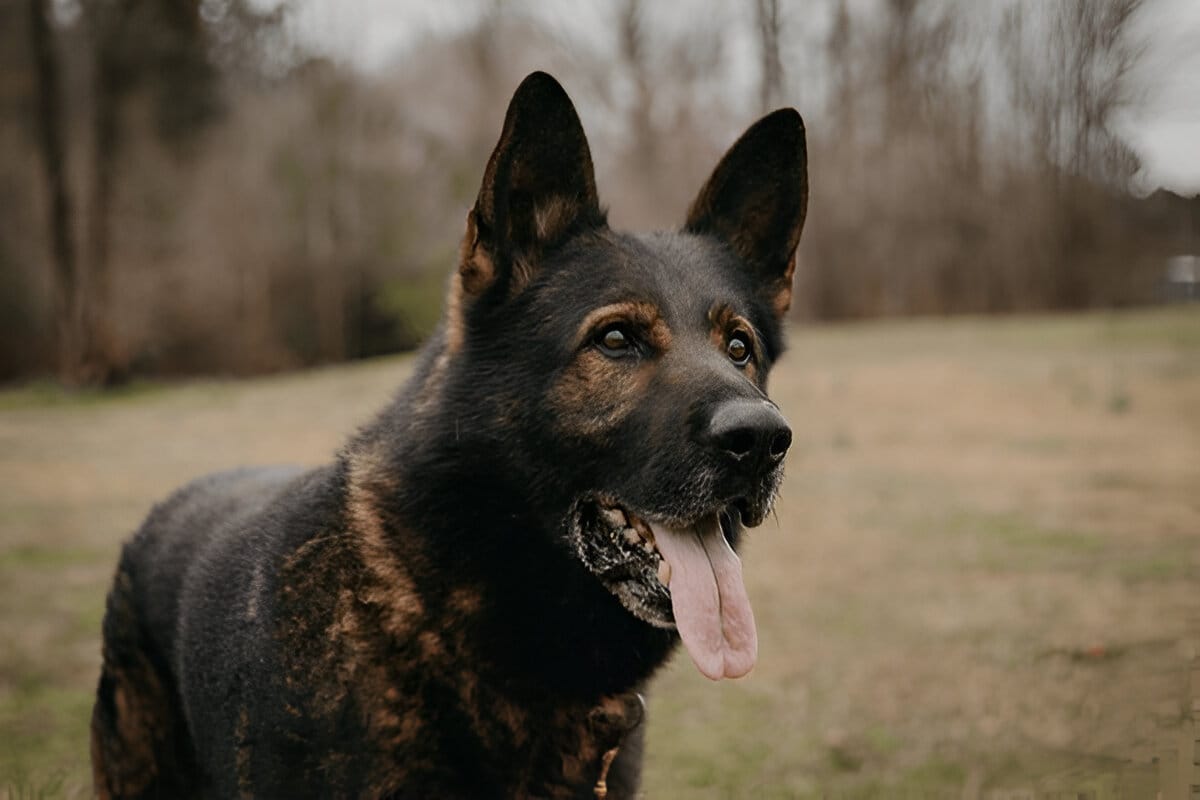
Photo credit: Shutterstock by Jess Whitney
Czech German Shepherd Breed Origin & History
Czech German Shepherds share their early breeding line with other East European variants, originally bred for herding and shepherding work, but these dogs developed their distinctly hard-working nature and somewhat imposing look that meant they quickly became popular with armed forces across the country, then known as the Czech Republic during the 20th Century.
The Army began using these working dogs for patrol and border security in the 1950s, when an intentional subline took off under breeders who were primarily responsible for the development of this unique shepherd breed, though you can trace their roots back all the way to the 14th century when now we know these people kept loyal guard dogs to protect their property and family while being used for farm work.
The government of Czechoslovakia later implemented a regulated breeding program focused on protection abilities and developed more family-friendly temperament traits, emphasizing abilities rather than just looks, though these remarkable dogs remained rare throughout the centuries and were largely limited to their native lands until the 1980s when a breed standard was finally established and the first registered puppies, according to official records, started being born in 1985.
From my research into breed documentation, it wasn’t until 2019 that the American Kennel Club accepted them into their Foundation Stock Service, which keeps track of purebred lineages and helps maintain these remarkable working canines for upcoming generations.
Character & Mental Capacity of the Czech German Shepherd Variety
Czech Shepherds have historically served as both household companions and commercial working animals, exhibiting exceptional vigilant, sharp, and clever traits that allow them to be coached to accomplish a broad spectrum of duties and functions.
Historically used for patrol work, borders security, close protection, and guarding work, these dogs remain naturally wary of strangers and without proper socialization may show signs of aggression, however with family members they are usually loving and affectionate.
This breed can be easily managed by an experienced handler who understands that their high intelligence doesn’t mean they’re low-maintenance – they absolutely need something to occupy their brain, otherwise they will become bored and develop behavioral issues that may damage your furniture and other household items.
Owners need to provide plenty of exercise, playtime, and mental games to keep these dogs busy, and while Czech German Shepherds generally get along with other animals in the house, progressive familiarization processes will help guarantee this outcome.
You should take things carefully when introducing them to cats due to their size, strength, and natural instinct, which means they might not do well in an apartment setting if you want their presence to go unnoticed. Apartments that include anybody walking past or those living above or next door may find these somewhat vocal dogs could end up causing noise complaints from neighbors.
For the best results, Czech German Shepherds do closest to their potential on land that can allow for additional outdoor activity, and any dog needs a properly secured outdoor area since these agile athletes can find a way out of most gardens that aren’t fully secure.
From my experience working with this breed, their combination of intelligence and physical capability makes them exceptional companions for those who can meet their substantial mental and physical needs.
Are These Dogs Good for Families?
Czech Shepherd dogs are primarily a working dog breed that can make excellent family companions with the right treatment and handling, as they are naturally loyal and affectionate while serving as a great guardian for children, though you should never leave very young kids alone with these powerful canines.
These robust and rugged dogs have a means of understanding and being quite forgiving of accidental grabbing or rough play, but you must always teach children to be respectful around them, and however you approach ownership, ensure they are properly trained to behave well in family settings.
From my experience with this breed, if you have any doubt about managing their intensity, contact an animal behaviorist or professional trainer to enlist their help with your training efforts to create the best possible family dynamic.
Does This Breed Get Along with Other Pets?
Czech German Shepherds can be successfully integrated into a household with existing pets fairly easily and generally get along with other dogs outside their own family circle, although early and ongoing socialization will make the process a lot easier through gradual introductions that ensure the dog gets used to living well with other animals.
This is especially true when introducing them to cats, as these shepherds tend to run after anything that might lead the dog into giving chase, so you should introduce them slowly over time until they become used to having the cat around, and if you have a big house, always give cats clear exit routes and plenty of high perches where they can hide.
From my experience working with this breed, you should never leave them alone with smaller animals, because even if the dog doesn’t intentionally harm any animal, accidents can happen due to the size and strength of this breed, which means it doesn’t take much to cause serious injury to small pets during play.
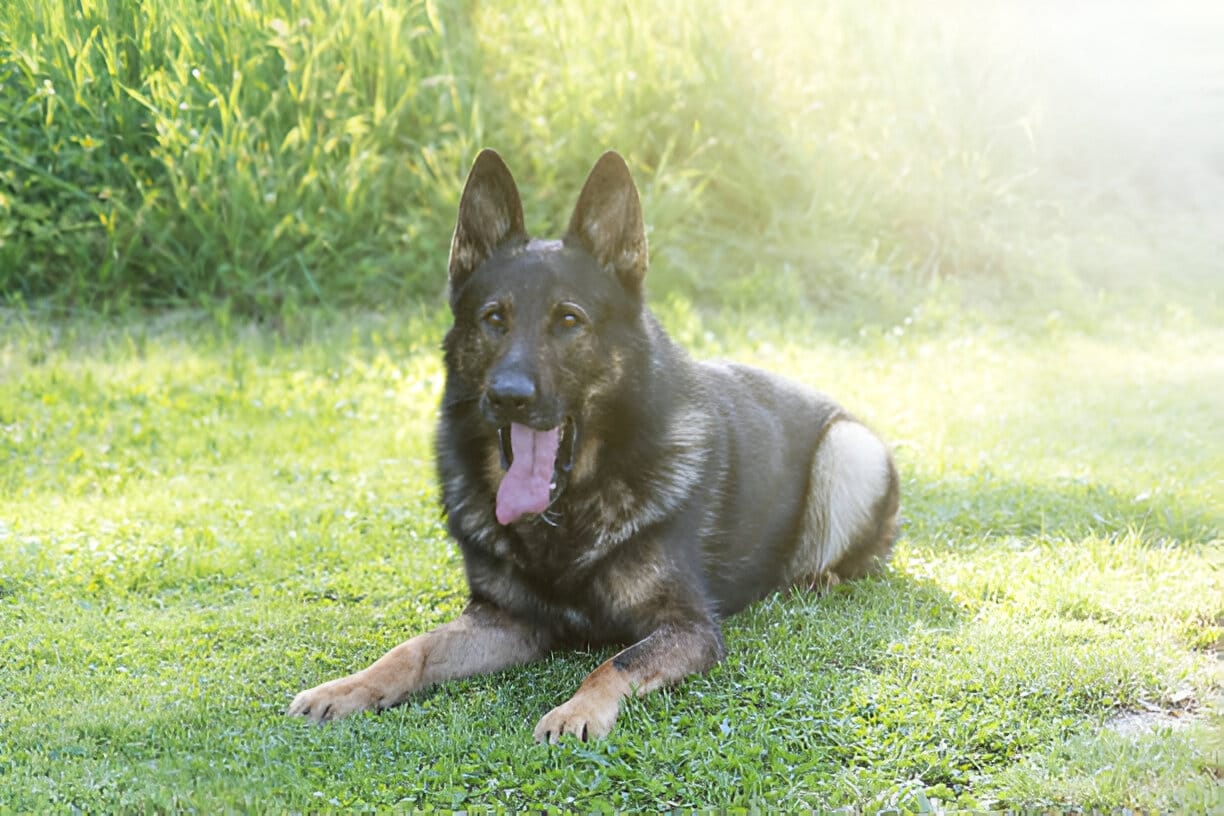
Photo credit: iStock by Brezina
Things to Know When Owning a Czech German Shepherd
Czech Shepherds are remarkably smart and intelligent dogs that tend to enjoy training due to their strong working attitude, and while this breed gets along beautifully with children and integrates into the family unit well, they can usually get used to other pets in the household with proper introduction.
However, since this breed was specifically bred for protection and guarding work, it means there’s potential for them to be highly protective behavior, and when coupled with their moderate to high energy levels and substantial exercise requirements, this isn’t necessarily the best choice for inexperienced owners.
Food & Diet Requirements
Czech German Shepherds are a large subline of the breed with an energetic nature and hearty appetite, so you can feed them wet food, dry kibble, or a combination of the two, but when feeding them, always follow the guidelines on the packaging since different foods have varying nutritional values and therefore require different levels of portions.
However, you can expect to provide around three full cups of kibble per day that should ideally be split evenly across multiple meals, and you should use your dog’s weight along with the manufacturer’s recommendations to determine how much to give, ensuring that no more than 10 percent of their daily calorie intake should come from treats used during training (and reduce their regular meals according to treat consumption).
From my experience with this breed, you should always ensure your dog has access to fresh, clean drinking water whenever it wants it, as these active dogs need consistent hydration to support their high energy lifestyle.
Exercise
Czech German Shepherds are a working breed with moderate to high energy levels that should be provided with at least 60 to 90 minutes of exercise per day, which should include regular walks but will benefit from being given additional, more strenuous forms of activity, especially those that engage the dog’s brain as well as their body.
You should consider canine sports since these dogs were originally bred as herding dogs, and many activities that involve those elements are areas where they still excel, or alternatively you can get them outside with a ball or toy to throw around your garden for half an hour or more.
You can also try agility courses you can set up yourself in your own yard, flyball, and other good options that shepherds tend to enjoy.
Active dogs that receive adequate exercise per day are much more ideal as family companions, and activities like jogging, hiking, and vigorous games of fetch are such great ways to burn off both their mental and physical energy.
When they receive sufficient exercise, these dogs are typically calm around the house and happy to cuddle on the couch with family members, but it’s important to keep in mind that due to the breed’s heavy coat, they don’t tolerate hot weather well, so you should limit outdoor exercise sessions during extreme heat.
Training
Czech German Shepherds are naturally suited for canine sports as a good way to keep your dog both mentally and physically engaged, and beyond these activities, regular training is essential for this type of breed that not only accepts structured learning but actually thrives with it.
Early training should concentrate on fundamental things like potty training and teaching basic commands such as sit and stay to help encourage positive behavior while working to discourage bad habits, since Czech German Shepherds tend to jump when meeting new people, so getting them accustomed to proper greetings through rewarding successful completion of each command will prevent issues later.
These dogs were historically used for everything from herding to protection work, and since these tasks often involve some independent thinking as well as more involved physical actions, they can therefore be successfully taught even complex behaviors once you establish a foundation, making Czech German Shepherds excellent candidates for owners who want to perform both active and physically demanding training routines.
The important element of any training program should include comprehensive socialization, especially when you introduce them to new animals and various situations, starting when they are young and continuing throughout their adult lives to desensitize them and teach them there is nothing to be afraid of that they don’t need to guard against.
Other factors to consider are that Czech German Shepherds are typically eager to please and pick up on training cues quickly, though they are often more intensely trained than standard German Shepherds due to their protective nature and strong bite (which is actually stronger than that of a Malinois), making proper training essential to ensure they don’t become aggressive.
From my experience with this breed, training should require owners to begin both socialization and age-appropriate puppy obedience classes as the ideal way for dogs to learn essential skills and manners, and you should also aim to expose them to different dogs in various locations to boost their comfort and confidence through consistent, always positive training methods, since these dogs can be sensitive at times and harsh corrections may cause them to shut down rather than learn, so keep training varied and sessions engaging.
Grooming
Czech German Shepherds have a double coat that requires regular care to prevent the fur from getting knotted and causing discomfort, while also helping to control shedding so there won’t be as much cleanup around your home.
You should perform brushing at least three times per week throughout the year, increasing the frequency to every day during heavy shedding season, and trim their nails every 2 months or when you can hear them clicking on hard floors, plus check the inside of their ears regularly during brushing sessions and look for signs of injury across their body.
Dental hygiene is a big problem for a lot of pet dogs because your pup can’t brush their own teeth, and while dental treats and chews are helpful, they’re not a replacement for proper routine care, so plan to brush your dog’s teeth at least once weekly.
During grooming sessions, you’ll remove loose fur, tangles, and mats before they become problematic, and your dog will likely experience seasonal periods of higher shedding often in spring and fall, which is the time you should increase brushing frequency to daily.
Keep bath time to roughly once per month – this should suffice depending on how dirty your dog gets during outdoor activities, and you can combine their monthly bath well with nail trimming to see whether they’re due for a trim plus weekly ear cleaning to remove wax buildup, debris, and other sources of irritation. Finally, aim to make grooming a positive experience for your Czech German Shepherd by starting these routines early and keeping sessions calm and rewarding.
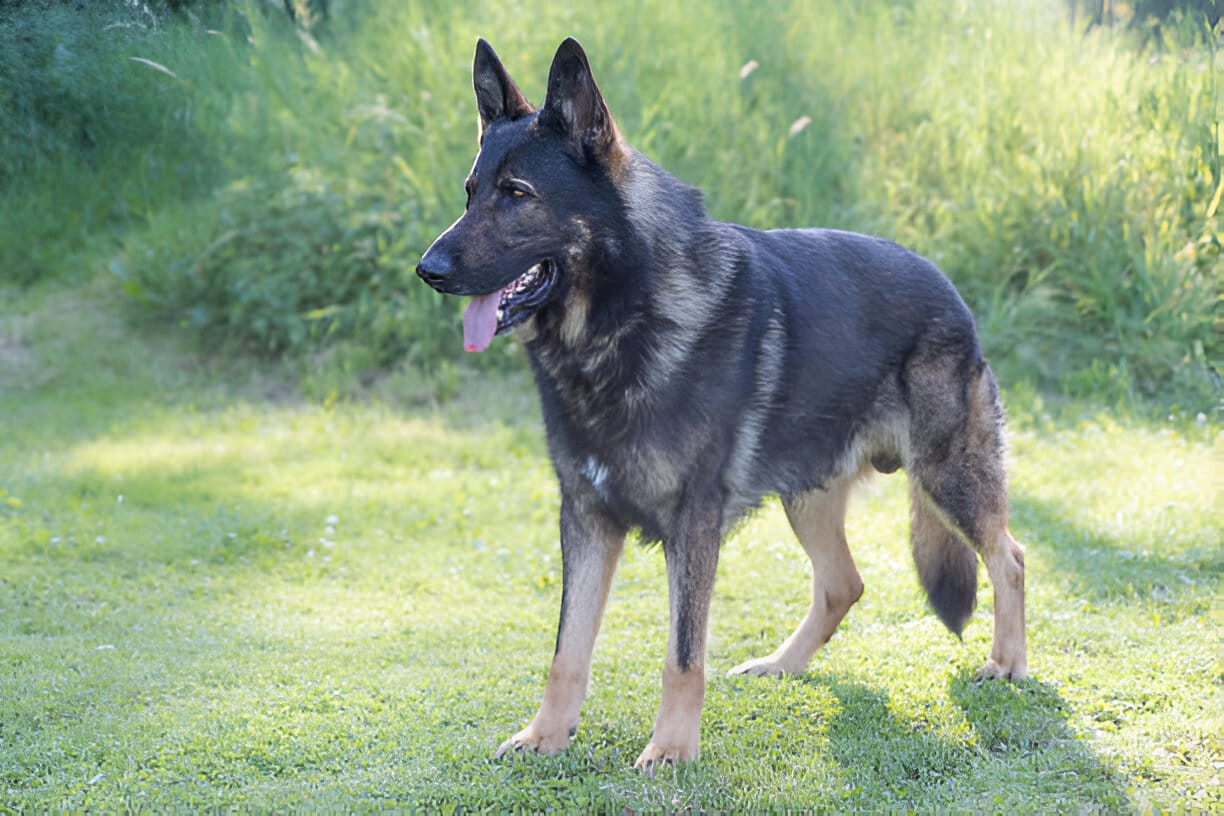
Photo credit: iStock by Brezina
Health and Conditions
Although Czech German Shepherds are generally robust and hardy dogs, there are some health conditions this breed can be prone to, particularly elbow and hip dysplasia – these issues occur when the bones around a joint do not grow properly or shift fully out of position, and over time as the dog develops and ages, this can cause significant discomfort, pain, and lameness that may progress into severe arthritis as the dog gets older.
If you notice your Czech German Shepherd showing any signs of difficulty while moving, you should have them checked by a vet who can recommend X-rays and other diagnostic checks to determine if this is the problem, and from my experience with this breed, it’s important to be aware of other potential issues including:
- Panosteitis
- Perianal Fistulas
- Hip Dysplasia
- Elbow Dysplasia
- Congenital Heart Defect
- Degenerative Myelopathy
- Hemophilia
- Von Willebrand’s Disease
3 Little-Known Facts About the Czech German Shepherd
1. They Used to Patrol the Borders with the Czech Army
While standard German Shepherds were originally bred as herding dogs, the Czech subset of this breed was specifically used to patrol the borders of the Czech Republic, often accompanying Army units on missions that required their exceptional intelligence, loyalty, and protective instincts.
2. Czech German Shepherds Are Usually Bigger and More Muscular
This Czech subset of the GSD breed shares a lot of similarities with the main German Shepherd line but are generally bigger, more muscular, and notably more athletic than the East German varieties which are commonly seen and kept as family pets.
From my experience observing different Czech German Shepherd lines, their enhanced physical build reflects their working heritage and selective breeding for strength and endurance rather than appearance alone.
3. They Can Be Very Protective
Given their military history, this means the Czech German Shepherd breed can be very protective of their humans, making early socialization and good training absolutely essential to help ensure your dog does not become overly aggressive toward strangers or perceived threats.
Their natural protective instincts are both a strength and a responsibility that requires consistent, positive guidance from experienced handlers who understand how to channel this trait appropriately.
Conclusion
The Czech German Shepherd is an exceptionally intelligent breed subset that’s rarely seen outside their native region, and while their history as a guard dog for close protection work is well-documented, they can make wonderfully loving and loyal family pets for the right owners.
If you’re considering getting one, you’ll need to provide lots of socialization and training from an early age, plus be prepared to meet their moderate to high exercise levels and manage their double coat, which also means increased grooming care requirements.
These remarkable dogs benefit greatly from giving them specific tasks to perform that keep them mentally active as well as physically engaged, and from my experience with the breed, they thrive when their working heritage is honored through purposeful activities that challenge both their body and mind.

